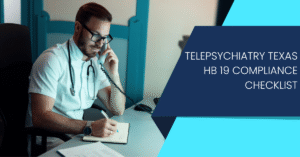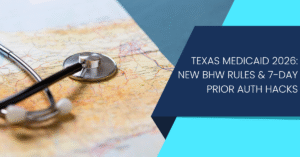Introduction
In the rapidly evolving healthcare landscape, safeguarding your medical practice has become more crucial than ever. The myriad challenges, from evolving regulations to the increasing threat of cyber attacks, necessitate a proactive approach to protect your patients and your practice. This comprehensive guide explores essential protection tips that will fortify your medical practice against potential risks and ensure its longevity.
Understanding the Regulatory Landscape: Navigating Compliance Challenges
One of the fundamental pillars of safeguarding your medical practice is a thorough understanding and adherence to the ever-changing regulatory landscape. Compliance with healthcare regulations is not merely a legal requirement but is also essential for maintaining patient trust and avoiding potential liabilities.
Stay abreast of updates to HIPAA, OSHA, and other relevant regulations to ensure your practice remains in full compliance. Regular training sessions for your staff can reinforce the importance of adhering to these guidelines, fostering a culture of compliance within your organization.
Data Security: Fortifying Against Cyber Threats
The digital transformation in healthcare has brought numerous benefits, but it also exposes medical practices to cyber threats. Safeguarding patient data is paramount, and implementing robust cybersecurity measures is non-negotiable.
Invest in state-of-the-art antivirus software, firewalls, and encryption tools to protect sensitive patient information. Regularly update your systems and conduct cybersecurity training for your staff to minimize the risk of data breaches. Additionally, consider obtaining cyber insurance to mitigate the financial impact of a potential breach.
Employee Training and Awareness: Building a Culture of Security
Your staff is the frontline defense against various threats, making ongoing training and awareness programs essential. Educate your team about the latest security threats, emphasizing the importance of identifying and reporting suspicious activities.
Implement protocols for verifying patient identities, especially in the age of telehealth, to prevent unauthorized access to sensitive information. Foster a culture of accountability, where every team member understands their role in maintaining the practice’s security.
Financial Safeguards: Mitigating Economic Risks
Beyond cybersecurity, protecting the financial health of your medical practice is equally crucial. Establishing robust financial safeguards can mitigate economic risks and ensure the sustainability of your operations. Regularly review and update your billing and coding practices to minimize the risk of audits and compliance issues.
Diversify revenue streams and explore opportunities for cost savings without compromising patient care. Engage with a financial advisor specializing in healthcare to assess and enhance your practice’s financial resilience.
Patient Communication: Enhancing Transparency and Trust
Effective communication with patients is a cornerstone of a successful medical practice. Building transparent and trusting relationships with your patients can serve as a protective barrier against potential legal issues and enhance the overall patient experience.
Ensure clear and concise communication about treatment plans, potential risks, and financial responsibilities. Implement secure communication channels, such as encrypted messaging systems, to safeguard sensitive patient information. Encourage open dialogue, actively listen to patient concerns, and address any issues promptly to foster a positive patient-provider relationship.
Emergency Preparedness: Anticipating and Responding to Crises
Crises, whether natural disasters or public health emergencies, can significantly impact the operations of a medical practice. Developing and regularly updating an emergency preparedness plan is crucial to safeguarding your practice and ensuring continuity of care.
Conduct regular drills to test the effectiveness of your emergency response plan, involving both clinical and administrative staff. Ensure that all team members are well-versed in their roles during a crisis and that communication channels remain open and reliable. Collaborate with local emergency services and other healthcare providers to enhance your practice’s resilience in the face of unforeseen events.
Legal Protections: Establishing a Solid Foundation
Seeking legal counsel and establishing a solid legal foundation is a proactive step in safeguarding your medical practice. Legal protections encompass various aspects, including contracts, liability insurance, and risk management. Regularly review and update contracts with vendors, suppliers, and staff to ensure they align with current regulations and industry standards.
Consult with a healthcare attorney to assess your liability insurance coverage and identify areas for improvement. Establish clear policies and procedures for risk management, addressing potential legal issues before they escalate.
Continuous Improvement: Adapting to Evolving Threats
Safeguarding your medical practice is an ongoing process that requires adaptability and continuous improvement. Regularly reassess your practice’s risks, staying informed about emerging threats and evolving regulations. Conduct periodic security audits to identify vulnerabilities and implement necessary updates.
Solicit feedback from staff and patients to gain insights into potential areas for improvement. Embrace a continuous learning and improvement culture, positioning your medical practice to navigate the ever-changing healthcare landscape with resilience and confidence.
Also Read:
Conclusion: A Resilient Future for Your Medical Practice
In conclusion, safeguarding your medical practice is a multifaceted endeavor that requires a comprehensive and proactive approach. By understanding and navigating the regulatory landscape, fortifying against cyber threats, prioritizing employee training, implementing financial safeguards, enhancing patient communication, preparing for emergencies, seeking legal protections, and embracing continuous improvement.
You can build a resilient foundation for the future of your medical practice. Through these essential protection tips, you not only mitigate risks but also contribute to the overall well-being of your patients and the long-term success of your practice.









